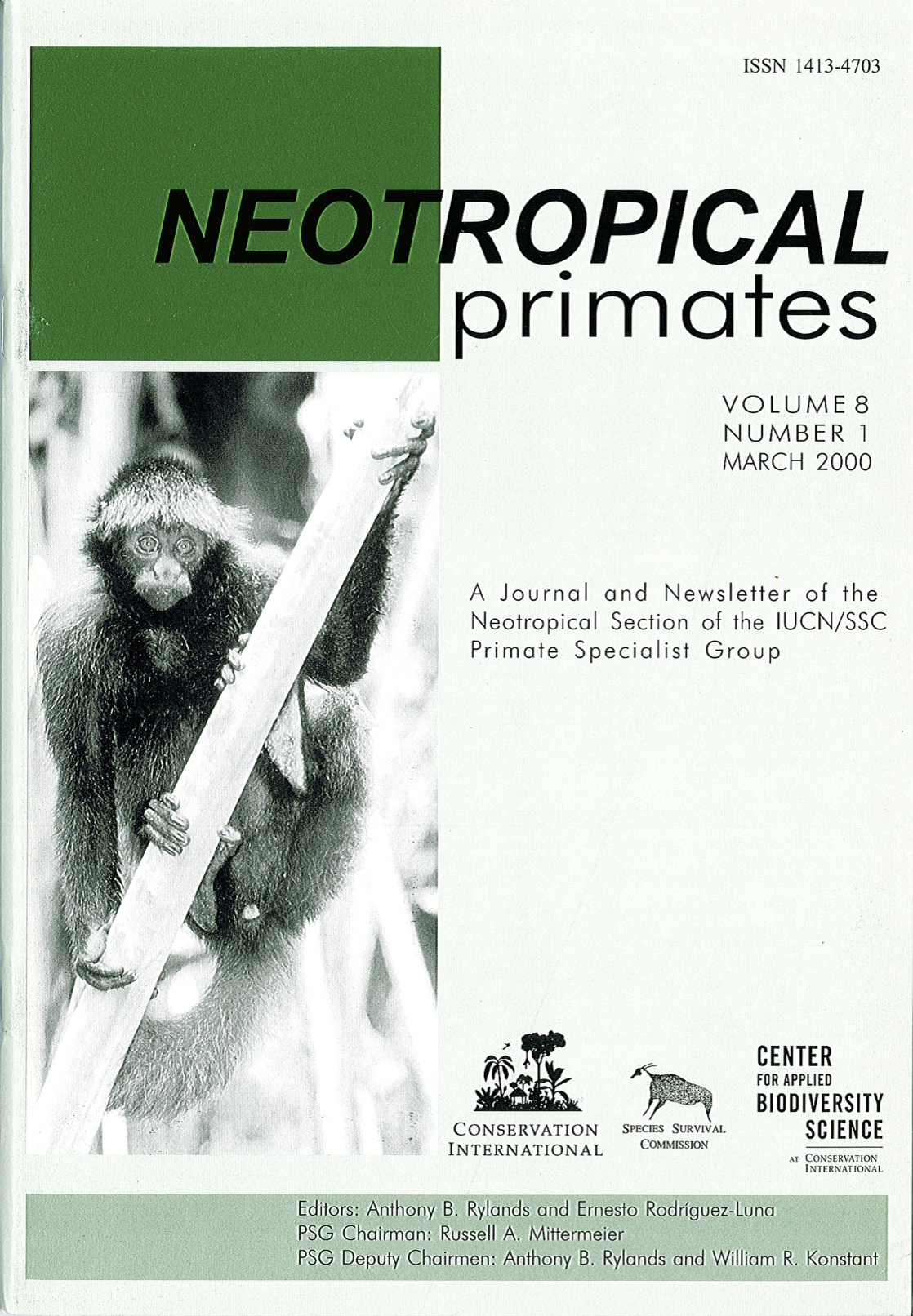Two new species of marmoset, genus Callithrix Erxleben, 1777 (Callitrichidae, Primates), from the Tapajós/Madeira interfluvium, south central Amazonia, Brazil
DOI:
https://doi.org/10.62015/np.2000.v8.443Keywords:
Primates, Callitrichidae, marmosets, Callithrix manicorensis sp. n., Callithrix acariensis sp. n., phylogeny, phylogeography, Brazil, AmazoniaAbstract
Two new species of marmoset, Callithrix manicorensis sp. n. and Callithrix acariensi sp. n., are described; the first from the interfluvium of the Rios Madeira, Aripuanã and Manicoré, and the second from the interfluvium of the Rios Acarí and Sucundurí, south of their confluence with the Rio Canumã, both in the state of Amazonas, south central Amazonia, Brazil. The new species are members of the Callithrix argentata group of marmosets, sensu Hershkovitz (1977). Callithrix manicorensis appears to be most closely related to C. nigriceps, C. marcai and C. aff. emiliae, its neighbors to the south, and Callithrix acariensis appears to be most closely related to Callithrix saterei, its neighbor to the north, and Callithrix melanura to the south, but they are easily distinguished from them. The most noticeable features of Callithrix manicorensis are the almost white or silvery upper parts including the arms, hands, chest, mande, nape and forehead, and the indistinct light gray (rather than black) cap on the head. The back is grayish and transversely white or silvery striped or mottled. The under parts are yellowish or orange. The legs and feet are orange. The tail is black. Those of Callithrix acariensis include the almost entirely snow white upper parts including the upper arms, chest, mande, nape and forehead, and the lack of a dark cap on the head. The back is grayish. The under parts are white. The legs and feet are bright orange. The tail is dark black with a bright orange dorsal patch at the proximal end. Most strikingly, this species shows a broad white hip and thigh stripe running from the mid dorsum (almost continuing across the back) to the knee. The phylogenetic status of the two new marmoset taxa is presented based on 902 base pairs (bp) of the mitochondrial control region and combined with previously determined sequences from related species. Additionally, 635 bp of intron 2 of the nuclear b2-microglobulin gene was sequenced for C. manicorensis and combined with sequences from related species. Callithrix manicorensis is shown to be a member of the C. argentata clade according to mitochondrial control region and b2-microglobulin intron 2 sequences. Callithrix acariensis is found to be most closely related to C. mauesi and C. humeralifera (the tufted-ear marmoset clade) based on mitochondrial control sequence. The phylogeography of the marmosets is discussed, as well as possible scenarios for historic patterns of dispersal and speciation. With the discovery of these two marmosets, the number of species of Callithrix increases to 21, of which 20 are endemic to Brazil (considering C. aff. emiliae from Rondônia a valid species as it is widely separated from C. emiliae). The total number of primate species for the country as a whole increases to 79, 41 of which are endemic.

Downloads
Published
Issue
Section
License

This work is licensed under a Creative Commons Attribution-NonCommercial-ShareAlike 4.0 International License.


